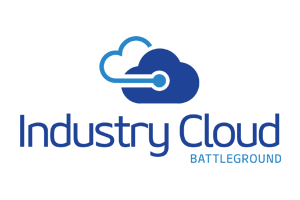Whenever we talk about the future of automation, there are two particular industries that come to mind, fintech and healthcare. However, there is one particular industry that is larger and seldom talked about, higher education, which seems both underserved and full of opportunity for change.
Digital transformation is now a necessity for all businesses, and higher education is the most significant area that is seeking this change. Automation in education offers numerous benefits for the management, administrative staff, and students alike. This sector has a huge potential for automation.
“Higher Education sector was considered as most underrated for AI and automation.”
Consider how your school can expand and how students can benefit from the extra time spent on academic and administrative responsibilities from the admissions process through the examination process. They can benefit from automation in education, which will make their lives easier.
It has become increasingly common for educational institutions around the world to re-examine their operations in light of the steps taken to avoid the spread of the novel coronavirus (COVID-19). While the university community is increasingly working from a distance, many institutions of higher education are eager to speed up their digital transformation. As a result of time restrictions, limited finances, and a lack of human resources, managing a wide range of duties becomes increasingly difficult.
In this sector, RPA use cases can be looked at from different perspectives. Here we have students, teachers, and admin teams who individually have a separate business process.
For now, let’s look at how this technology can have a massive impact on the education sector and see the prominent use cases:
Course Registration and Enrollment
Enrolling students is one of the most time-consuming and demanding tasks an educational institution must perform. In addition to a lot of paperwork, this requires careful management. Stress and a lack of productivity can both be caused by a single misplaced document.
RPA can readily take the place of this time-consuming and error-prone manual method. RPA solutions in education can help streamline the entire registration process, from verifying forms to determining if a student is eligible to attend or not, automating the complete process.
International Students Profile check
This is very important for countries that rely on the admission of international students. Student profile checks are a must and include Visa Information validations from government portals. That information is then fed into the university’s database. The volume of critical information is quite high, especially for countries like The United States, Australia, Canada, and a few others, which welcome many international students every year. What’s more, profile checks are mandatory for each student, meaning that any errors could inhibit admissions.
RPA can address those issues and automate the entire process, thus saving admin staff from performing what many consider to be a mundane task. Additional benefits include students receiving confirmations much earlier, thanks to a fast and tireless bot that works 24 by 7.
Alumni Support Service
Higher education organizations offer support services to their alumni, such as support letters, transcripts, and so on. Those requests can sometimes take days or weeks, depending upon staff availability and priorities. Fulfilling such requests can easily be handled by RPA bots, which are triggered automatically based on the request received. Those bots can fill in all the details needed by internal systems and provide the user with relevant documents. The benefit here is one of reducing loads on staff while fulfilling alumni requests and providing the very best in support.
Meetings Scheduler
Planning and organizing meetings are tedious and time-consuming, regardless of whether it is for a committee, community event, conference, or public outreach. Scheduling and sending revised invitations in case of changes proves even more time-consuming. Here, RPA brings much-needed automation to the process, Using RPA (and associated bots) can streamline and automate most everything needed for scheduling meetings, sending invitations, and updates to all attendees, eliminating errors, and expediting the process.
Digital Learning
Teachers face a variety of challenges in today’s online learning environment. Additional duties include inspecting and grading assignments, monitoring course progress, and ensuring that students are on time for class. Both classroom and online learning can benefit from robotic process automation’s strength and efficiency.
Student Grading and Assessment
Faculties currently use a labor-intensive and time-consuming process of manually filling out forms and report cards to assign grades to students. Automation now makes it possible for them to assign grades for specific students after they have completed quizzes, tests, projects, or any other type of assessment. As a result, students are able to move on to their next assignments more quickly as a result of this process.
Administrative Tasks
An institution’s administration, finances, and marketing are only some of the many duties that staff must handle. What if you could obtain all of this information with just one click? With automation, you may eliminate the physical labor and provide efficiency, agility, and transparency to all administrative procedures by automating them.
Starting with smaller processes, such as course registration and enrolment, proves to build trust for automation within the organization. There are many other automation opportunities that are not addressed above, including; Students Vaccination status checks, generating NOCs, and many others.
I would say, to maximize the use of automation in the education sector, the leadership team will have to pitch in and take some ideas from other CIOs who have successfully implemented AI and automation in the fintech and the healthcare industries. I believe that there are plenty of opportunities here for automation, it’s just that this sector is still not ready with the architecture model for automation and AI implementation. We need a strong push from higher education authorities who can look at successful use cases in other sectors and build their own automation process.








